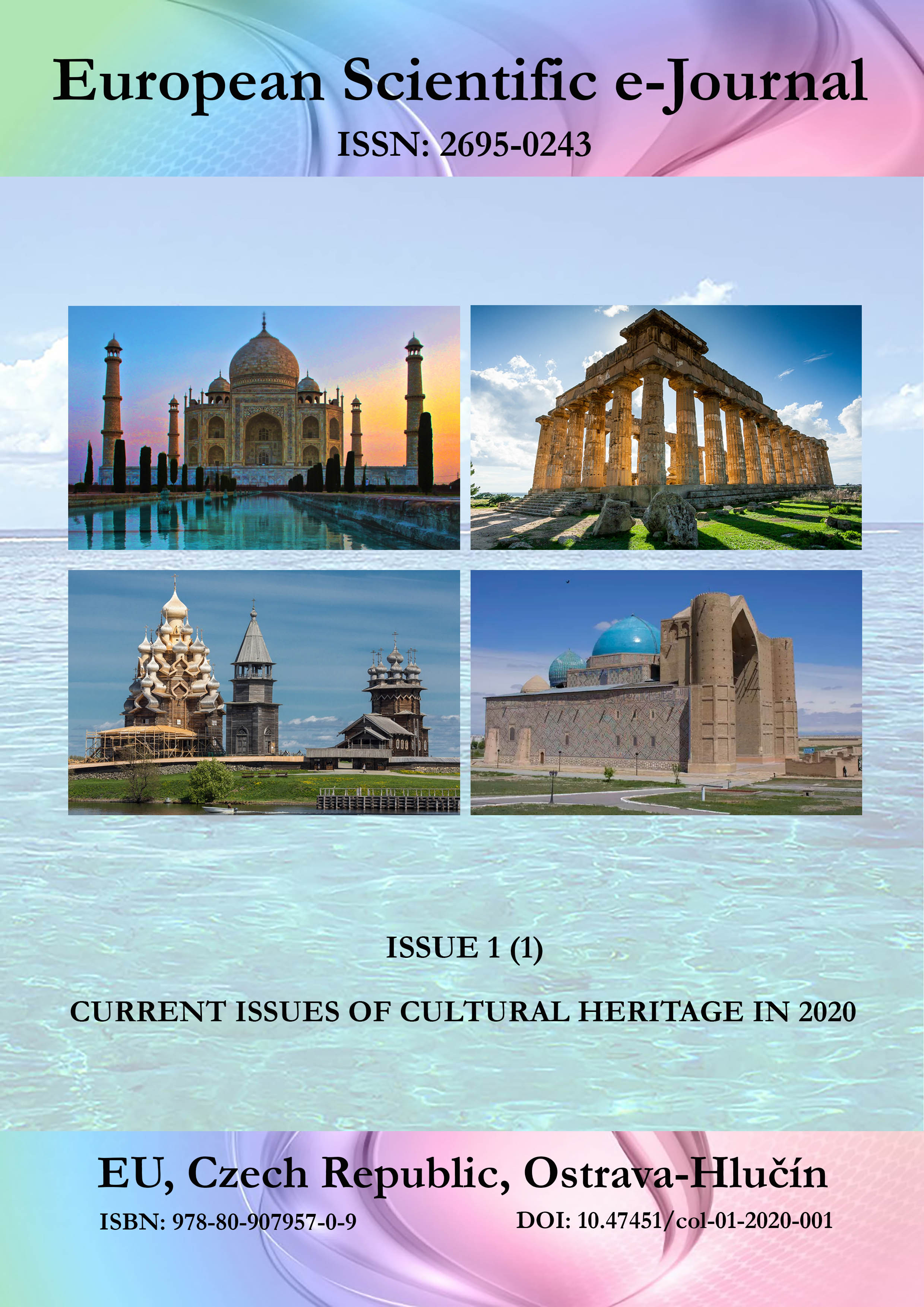Opportunities for the Development of Russian Folk Art in the 21st Century
DOI:
https://doi.org/10.47451/art2020-08-003Keywords:
folk art, tradition, folk, traditional art, handicrafts, art industryAbstract
Folk art, including Russian folk art, existed and developed throughout the 20th century and continues to exist in the 21st century. Russian traditional art is well-known in the world. When in any country of the world, a local resident is asked what the word "Russia" is associated with, then usually in response along with frosts, bears, vodka, Troika, samovar, balalaika and the Kalashnikov, it is also called such concepts as “Palekh,” “Gzhel” and “Khokhloma.” The reason for this is the peculiarity of the existence of folk art, based on the traditions of the ethnic group. The author concludes that Russian traditional applied art having survived all the troubles and misfortunes, continues to exist. At the same time, traditional art directly affects the “high” art of the nation.
Downloads
References
Big Soviet Encyclopedia. In 30 vols. (3rd ed.). (Vol. 8.). (1972). Moscow: Soviet Encyclopedia.
Constitution of the Russian Federation. (2019, April 11). Constitution. http://www.constitution.ru/
Cottage industry. (2006). Holy Russia. Great Encyclopedia of the Russian People. Moscow: Russian Economy.
Dal, V. I. (1995). Explanatory dictionary. In 4 vols. (Vol. 2). Moscow: Terra Edition Center.
Fichte, I. G. (1906). The main features of the modern era. St. Petersburg.
Folk art: history and modernity. (2006). Interview with the rector V.F. Maksimovich. Autumn school of traditional applied arts. November 15, 2006. Program and training materials. St. Petersburg.
History in the Diderot and d’Alembert Encyclopedia. (1978). Leningrad: Nauka.
Kurakina, I. I. (2018). Content of teaching the theory and history of traditional applied art in specialized higher education. St. Petersburg: HSFA.
Lebedev, S. V. (2015, January 16). Yantarnaya Rus. Ethnic history of the Kaliningrad region. Russian People’s Line. Ruskine. https://ruskline.ru/analitika/2015/01/16/rus_yantarnaya
Levitskiy, V. (1902). Importance of Handicrafts in the national economy. National Economy, 2.
Mamontova, N. N. (1995). Features of development of folk crafts and crafts of Russia from the 18th to early 20th century. Folk art of Russia: Tradition and Style, 86. Moscow: Proceedings of GiMA.
Marat, J-P. (1956). Selected works (Vol. 1). Moscow.
Nekrasova, M. A. (1981). Folk art creativity as a type of artistic creativity. Art, 11. Moscow.
Nekrasova, M. A. (1982). Problems of folk art. Moscow: Fine Art.
Oganov, A. A., & Hangeldieva, I. G. (2006). Theory of art: Textbook for independent work of students. Moscow: Publishing House of the International University in Moscow.
Shabanov, N. K., Shabanova, O. P., Tarasova, M. S., & Pronina, T. D. (Comp.). (2005). Art and pedagogical dictionary. Moscow: Akademicheskiy Prospekt: Triksta.
Skirbekk, G., & Guillier, N. (2003). History of philosophy. Moscow: Humanitarian Publishing Center VLADOS.
Trevor-Roper, H. (2000). The invention of tradition: The highland tradition of Scotland. Cambridge: Cambridge University Press.
Ushakov, D. N. (1996). Explanatory dictionary (Vol. 2). Moscow: Terra Edition Center.
Zverev, Y. (1997). Kaliningrad region of Russia in a new system of geopolitical coordinates. Ethnic and Regional Conflicts in Eurasia, 2. Moscow: Whole World.
Published
Issue
Section
License
Copyright (c) 2025 European Scientific e-Journal

This work is licensed under a Creative Commons Attribution 4.0 International License.
The European Scientific e-Journal (ESEJ) is an open access journal. Articles are available free of charge as PDF files on the website of the European Institute for Innovation Development. PDF files can be previewed with Acrobat Reader from www.adobe.com.
All articles of the “Tuculart Student Scientific” are published under a Creative Commons Attribution 4.0 Generic (CC BY 4.0) International license.
According to the Creative Commons Attribution 4.0 Generic (CC BY 4.0) International license, the users are free to Share — copy and redistribute the material in any medium or format for any purpose, even commercially (the licensor cannot revoke these freedoms as long as you follow the license terms).
Under the following terms:
- Attribution — You must give appropriate credit, provide a link to the license, and indicate if changes were made. You may do so in any reasonable manner, but not in any way that suggests the licensor endorses you or your use.
- No additional restrictions — You may not apply legal terms or technological measures that legally restrict others from doing anything the license permits.


